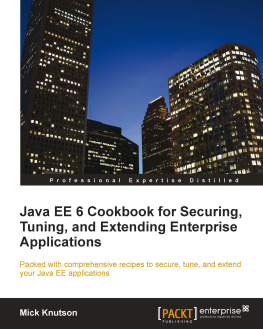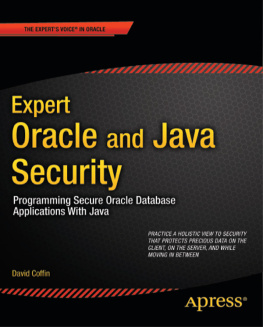Copyright 2015 by McGraw-Hill Education. All rights reserved. Except as permitted under the United States Copyright Act of 1976, no part of this publication may be reproduced or distributed in any form or by any means, or stored in a database or retrieval system, without the prior written permission of Publisher, with the exception that the program listings may be entered, stored, and executed in a computer system, but they may not be reproduced for publication.
ISBN: 978-0-07-183589-3
MHID: 0-07-183589-X
The material in this eBook also appears in the print version of this title: ISBN: 978-0-07-183588-6, MHID: 0-07-183588-1.
eBook conversion by codeMantra
Version 1.0
All trademarks are trademarks of their respective owners. Rather than put a trademark symbol after every occurrence of a trademarked name, we use names in an editorial fashion only, and to the benefit of the trademark owner, with no intention of infringement of the trademark. Where such designations appear in this book, they have been printed with initial caps.
McGraw-Hill Education eBooks are available at special quantity discounts to use as premiums and sales promotions, or for use in corporate training programs. To contact a representative please visit the Contact Us page at www.mhprofessional.com.
Oracle and Java are registered trademarks of Oracle Corporation and/or its affiliates. All other trademarks are the property of their respective owners, and McGraw-Hill Education makes no claim of ownership by the mention of products that contain these marks.
Screen displays of copyrighted Oracle software programs have been reproduced herein with the permission of Oracle Corporation and/or its affiliates.
Information has been obtained by Publisher from sources believed to be reliable. However, because of the possibility of human or mechanical error by our sources, Publisher, or others, Publisher does not guarantee to the accuracy, adequacy, or completeness of any information included in this work and is not responsible for any errors or omissions or the results obtained from the use of such information.
Oracle Corporation does not make any representations or warranties as to the accuracy, adequacy, or completeness of any information contained in this Work, and is not responsible for any errors or omissions.
TERMS OF USE
This is a copyrighted work and McGraw-Hill Education and its licensors reserve all rights in and to the work. Use of this work is subject to these terms. Except as permitted under the Copyright Act of 1976 and the right to store and retrieve one copy of the work, you may not decompile, disassemble, reverse engineer, reproduce, modify, create derivative works based upon, transmit, distribute, disseminate, sell, publish or sublicense the work or any part of it without McGraw-Hill Educations prior consent. You may use the work for your own noncommercial and personal use; any other use of the work is strictly prohibited. Your right to use the work may be terminated if you fail to comply with these terms.
THE WORK IS PROVIDED AS IS. McGRAW-HILL EDUCATION AND ITS LICENSORS MAKE NO GUARANTEES OR WARRANTIES AS TO THE ACCURACY, ADEQUACY OR COMPLETENESS OF OR RESULTS TO BE OBTAINED FROM USING THE WORK, INCLUDING ANY INFORMATION THAT CAN BE ACCESSED THROUGH THE WORK VIA HYPERLINK OR OTHERWISE, AND EXPRESSLY DISCLAIM ANY WARRANTY, EXPRESS OR IMPLIED, INCLUDING BUT NOT LIMITED TO IMPLIED WARRANTIES OF MERCHANTABILITY OR FITNESS FOR A PARTICULAR PURPOSE. McGraw-Hill Education and its licensors do not warrant or guarantee that the functions contained in the work will meet your requirements or that its operation will be uninterrupted or error free. Neither McGraw-Hill Education nor its licensors shall be liable to you or anyone else for any inaccuracy, error or omission, regardless of cause, in the work or for any damages resulting therefrom. McGraw-Hill Education has no responsibility for the content of any information accessed through the work. Under no circumstances shall McGraw-Hill Education and/or its licensors be liable for any indirect, incidental, special, punitive, consequential or similar damages that result from the use of or inability to use the work, even if any of them has been advised of the possibility of such damages. This limitation of liability shall apply to any claim or cause whatsoever whether such claim or cause arises in contract, tort or otherwise.
To all the developers and software professionals we have worked with, whether it was teaching secure coding, ethically hacking your software, or writing code alongside you, it has been an honor working with you. To all hackers, both builder and breaker, and to everyone who has ever poked around an application and said I wonder what happens if I try , you are an inspiration. Stay curious. And to anyone who is hungry to learn something new about software development and software security, this book is for you.
About the Authors
Jim Manico (Hawaii) is an author and educator of developer security awareness trainings. He is a frequent speaker on secure software practices and is a member of the JavaOne Rock Star Wall of Fame. Jim is also a Global Board Member for the OWASP Foundation, where he helps drive the strategic vision for the organization. He manages and participates in several OWASP projects, including the OWASP Cheat Sheet series and several secure coding projects. For more information, see www.linkedin.com/in/jmanico.
August Detlefsen (California) is a Senior Application Security Consultant with more than eighteen years experience in software development, enterprise application architecture, and information security. August works with major clients in financial services, health care, mobile, eCommerce, and technology to help secure web properties from potential threats. His companys consulting services include source code and infrastructure reviews, penetration testing, threat modeling, gap analysis, software security control architecture, and training. August is a graduate of Dartmouth College and an active member of OWASP. He has contributed to several OWASP projects, which provide web developers with APIs for building robust applications. August enjoys developing tools to assist penetration testers, including Burp Suite extensions to test specific frameworks such as Amazon Web Services and Google Web Toolkit. He manages the site http://canyouxssthis.com to test and compare various anti-XSS technologies. August also developed the CodeMagi Clickjacking Defense, which is the current gold standard for clickjacking prevention.
About the Technical Editor
Milton Smith (California) leads the strategic security program for Java platform products as Senior Principal Security PM at Oracle. Milton is responsible for defining the security vision for Java and managing working relationships with security organizations, researchers, and the industry at large. Prior to Oracle, Milton led security for Yahoos User Data Analytics (UDA) property. For more information, see https://www.linkedin.com/in/spoofzu or www.securitycurmudgeon.com/.
Foreword
The greatest challenge in product security today is the fact that security quality is difficult for consumers to evaluate. A product with little security design consideration and a weak security posture discloses few, if any, outward signs of being insecure. Software security, like performance and scalability, cannot be effectively evaluated visually and requires specialized tools and training. In a vacuum, consumers often mistakenly assume strong, positive product safety unless news surfaces to shake that confidence. As a result, with ever increasing pressure on business leaders to be more competitive and deliver more value to customers, security is frequently marginalized in favor of delivering more direct features with tangible business value. Theres little incentive to pursue security excellence when consumers assume it already exists. All too often, businesses roll the dice and short product security, explaining away incidents when they occur with excuses like:


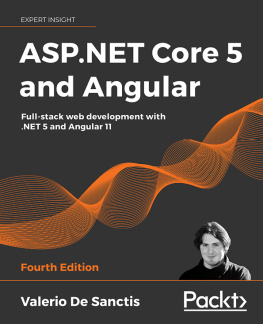
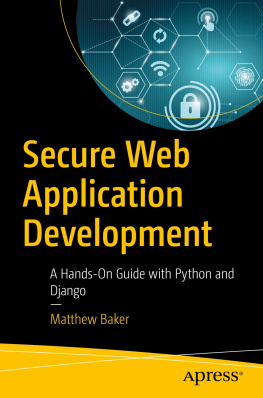
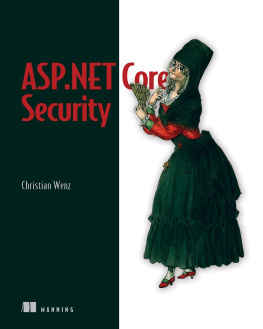

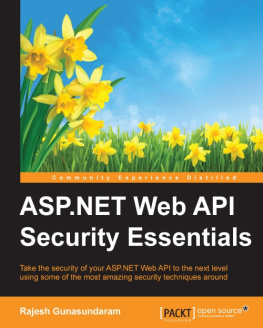
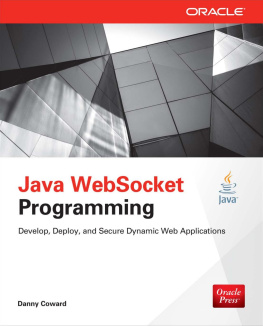

![David Coffin [David Coffin] - Expert Oracle and Java Security: Programming Secure Oracle Database Applications with Java](/uploads/posts/book/119377/thumbs/david-coffin-david-coffin-expert-oracle-and.jpg)
